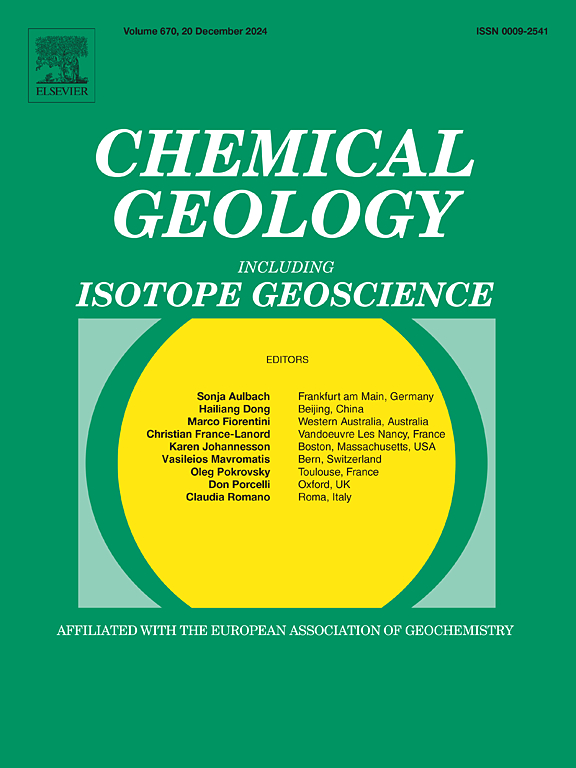Water-air-CO2-flux changes after damming rivers loaded with suspended basaltic particles
IF 3.6
2区 地球科学
Q1 GEOCHEMISTRY & GEOPHYSICS
引用次数: 0
Abstract
Contributions of CO2 emissions from reservoirs to the atmosphere are continuously increasing with rising energy demand. Therefore, it is important to quantify the emissions and define the rate determining mechanism of CO2 fluxes in man-made reservoirs. Here we present results from two reservoirs in Iceland over a total time span of 16 years. The partial pressure of CO2 within the Hálslón reservoir, fed by glacier meltwater loaded with suspended basaltic particles, was considerably less than the CO2 pressure of the atmosphere during the years 2008–2013. The specific CO2 uptake from the atmosphere into Hálslón was estimated at 121 ± 67.9 gCO2 m−2 yr during the 6 months ice-free period or 5000 t annually. The uptake rate was governed by the CO2 gradient across the water-air-interphase and windspeed but less by temperature. However, temperature will affect water-rock interactions and sub-zero temperature can result in ice cover, terminating water-air interactions. Atmospheric CO2 concentration dictates the maximum upper limit of the CO2 influx rate at fixed wind speed.
The downstream mixing of Hálslón reservoir water with the CO2 emitting Lagarfljót reservoir lowered the CO2 emissions from Lagarfljót from 5335 t CO2 yr−1 to 1670 t CO2 yr−1 after the damming. This study shows that dissolution of basalt in glacier melt waters leads to direct CO2 uptake from the atmosphere, which can potentially be utilised for future carbon removal from the atmosphere.
求助全文
约1分钟内获得全文
求助全文
来源期刊

Chemical Geology
地学-地球化学与地球物理
CiteScore
7.20
自引率
10.30%
发文量
374
审稿时长
3.6 months
期刊介绍:
Chemical Geology is an international journal that publishes original research papers on isotopic and elemental geochemistry, geochronology and cosmochemistry.
The Journal focuses on chemical processes in igneous, metamorphic, and sedimentary petrology, low- and high-temperature aqueous solutions, biogeochemistry, the environment and cosmochemistry.
Papers that are field, experimentally, or computationally based are appropriate if they are of broad international interest. The Journal generally does not publish papers that are primarily of regional or local interest, or which are primarily focused on remediation and applied geochemistry.
The Journal also welcomes innovative papers dealing with significant analytical advances that are of wide interest in the community and extend significantly beyond the scope of what would be included in the methods section of a standard research paper.
 求助内容:
求助内容: 应助结果提醒方式:
应助结果提醒方式:


